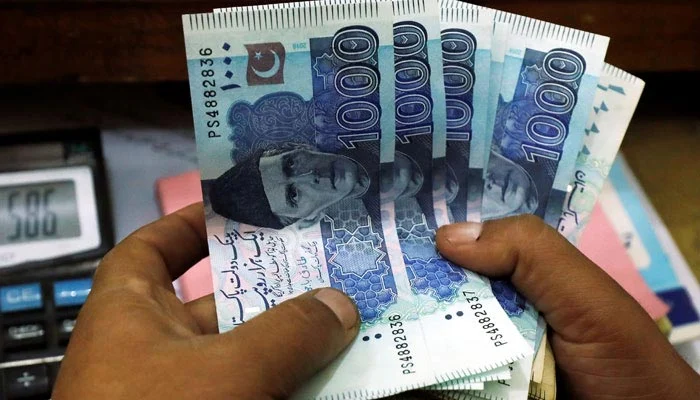KARACHI, Nov 27(ABC): The rupee is likely to bounce back next week on expected inflows from the Asian Infrastructure Investment Bank (AIIB) and as participants in the foreign exchange market track the impact of a key interest rate hike by the State Bank of Pakistan, reported Sunday.
During the outgoing week, the rupee closed on a weak note and lost 0.12% against the greenback. It ended at 223.66 per dollar on Monday and at 223.94 on Friday in the interbank market.
In a bid to control the high inflation, the central bank raised its benchmark interest rate by 100 basis points to 16%. However, according to some experts, the increase in interest rates was influenced by the International Monetary Fund (IMF).
“Looks like SBP is more concerned with rising inflation,” said Mohammed Sohail, CEO of Topline Securities on his official Twitter handle.
Moreover, IMF talks for the next tranche are underway and are delayed, which may have also compelled the committee to take this step to fight inflation, Sohail added.
“There are some positive market triggers right now and we will observe how the market responds to these positives,” said another analyst. As a result of the central bank’s confirmation that the $1 billion Eurobond repayment that is due on December 5 will be made on December 2, concerns regarding the country’s inability to meet its financial obligations on time appear to be reduced, he said.
“This repayment will not have any impact on foreign reserves as the funding has already been arranged,” the SBP said at an analysts’ briefing held after the monetary policy meeting on Friday. The central bank also said $500 million inflows from the AIIB were most likely to arrive on Tuesday next week.
Commenting on the expected reserve position by FY2023-end, SBP said that it would remain largely dependent on the planned inflows, outflows, and rollovers; however, will be much higher than the current level.
During November, $1.8 billion was repaid, which was mostly against commercial loans, according to SBP.
SBP said Pakistan is expecting external flows from multilateral (such as World Bank, Asian Development Bank, AIIB and others), bilateral and other sources. Despite some positives, the rupee weakening doesn’t seem to end soon, according to Tresmark weekly client note.
“While there has been a material cut in CAD [current account deficit] in July – October FY2023, the next three months are going to pose a significant challenge. November, December, and January are typically high import months and with a sharp decline in remittances and mild decline in exports, the CAD figures for the 3 months is approximately $2.9 billion (revised estimates),” it said.
The rupee/dollar parity could test previous highs if the pressure on the forex reserves is not eased, it noted.

